I recently discovered Winsor & Newton water mixable oil paints, and thought I’d share my journey on the blog.
I haven’t used oil paints since my art college days. I usually favour pen & ink, watercolour and acrylic paints for my artwork, the odour and messy clean up having put me off oils for many years.
I tried oils again, about another 10 years ago, but in hindsight I think I suffered from buying budget oil paints, I struggled to get that ideal point between the paint mixing well and each colour holding its own on the canvas when more brushstrokes are applied.
It’s this ability to manipulate the colours on the canvas that I’ve rediscovered with these water mixable oils.
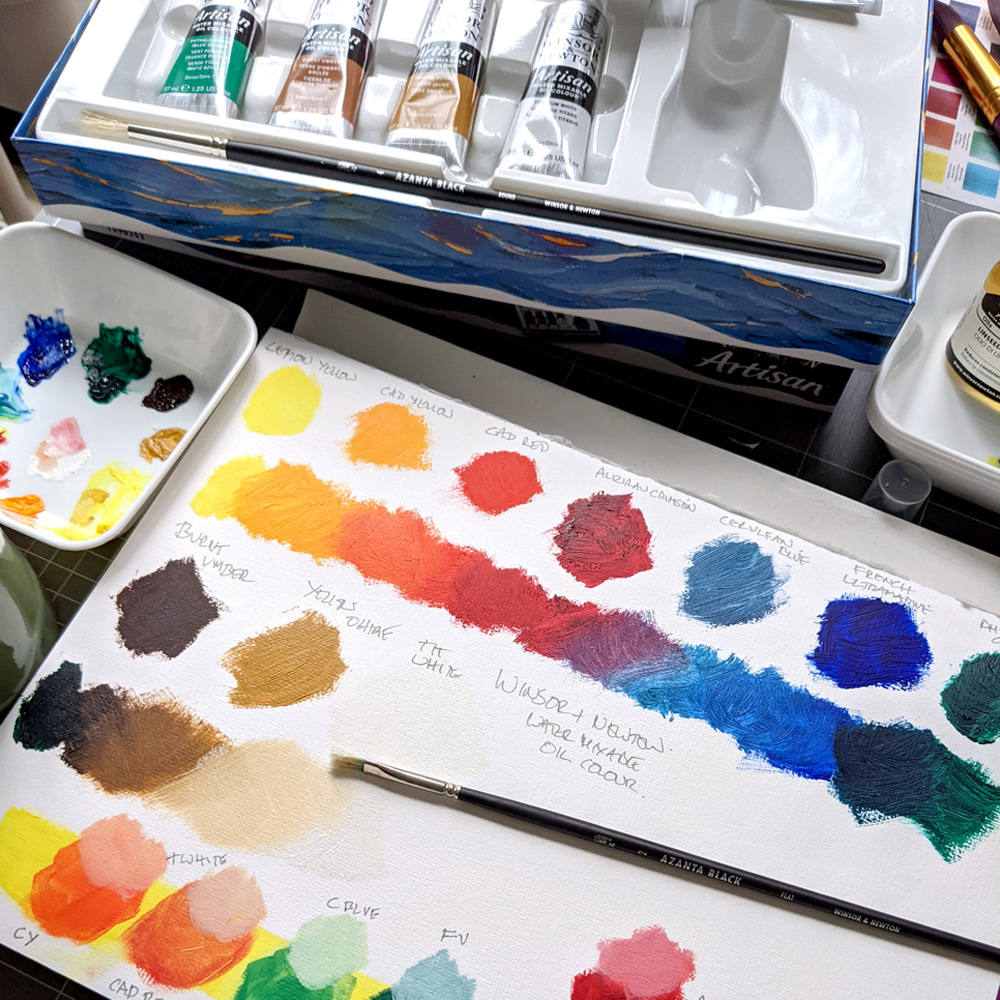
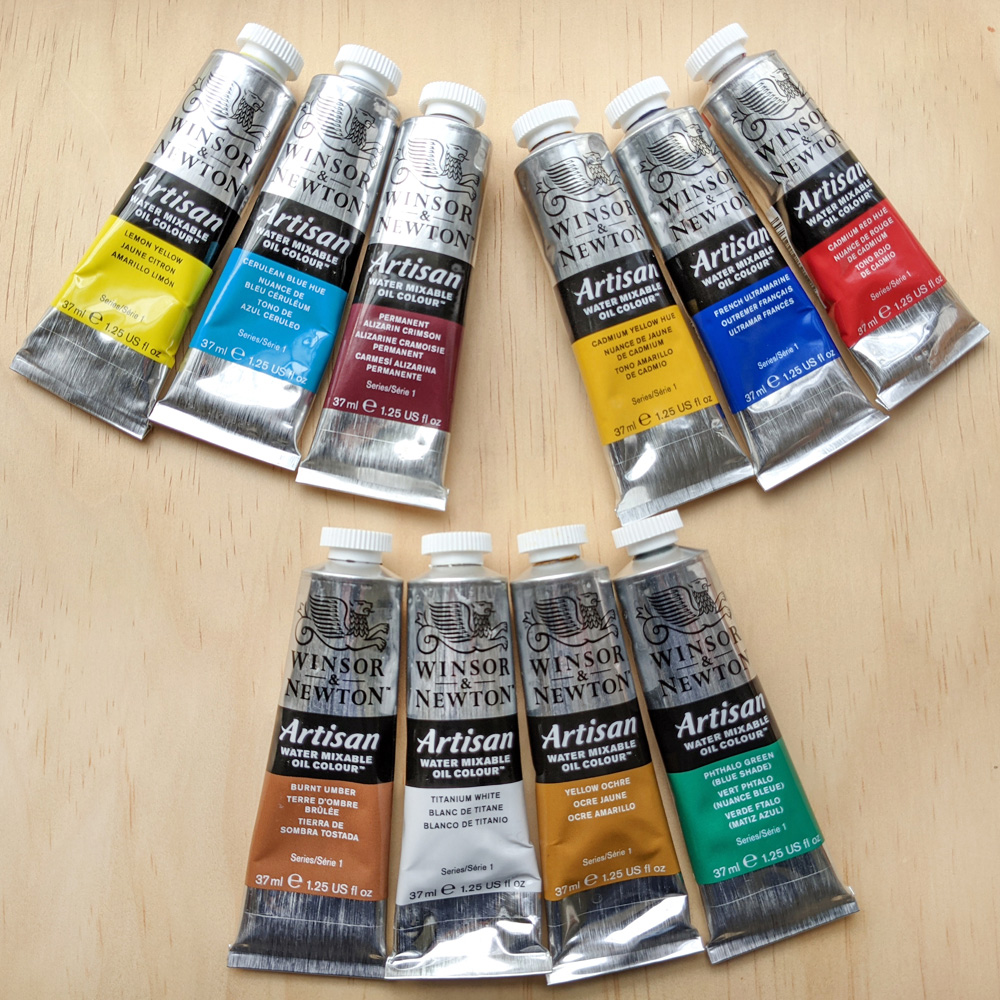

I bought a box set of Winsor & Newton paints; they came with some water compatible linseed oil, and a few useless brushes!
But most importantly the colours are great; you essentially get a cool colour primary trio, a warm colour primary trio, plus white, brown, yellow ochre & a primary green.
Lemon Yellow / Cerulean Blue / Alizarin Crimson
Cadmium Yellow (hue) / French Ultramarine / Cadmium Red (hue)
Titanium White / Yellow Ochre / Burnt Umber / Pthalo Green
There are some who recommend using water to thin the paints during the painting process as well as for clean up – but I think this results in a ‘sticky’ paint and something that may not adhere well in multiple layers.
I did some YouTube research on how to use these water mixable paints, and I think my main learning was to treat them the same as ordinary oil paints, mixing the paints with oils and mediums, and just keeping water for the clean up process rather than stinky turps.

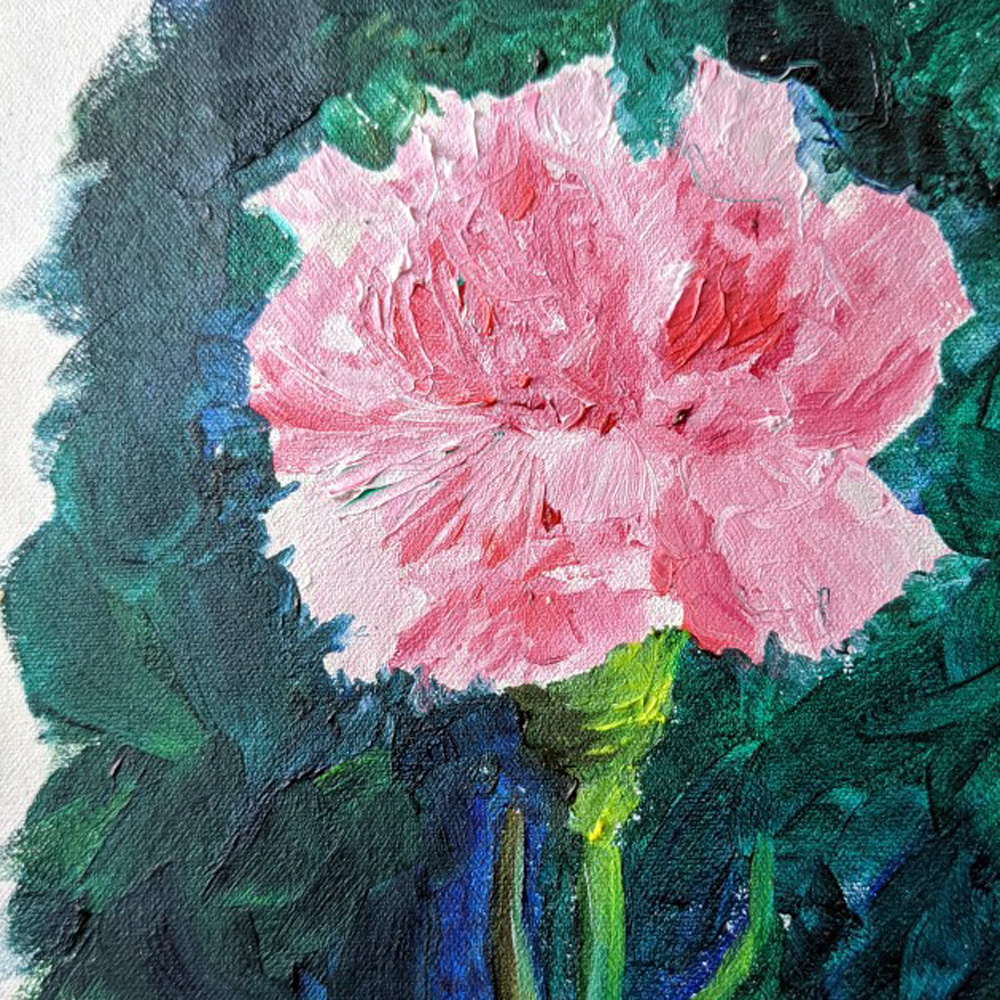
I started by diving in to the process and painting a quick flower to see how the paints worked, and I agree with the YouTube consensus – I would call them water clean up oil paints rather than water mixable.
I found the paints straight from the tube a little stiff, so I used the W&N Artisan water mixable Linseed Oil to mix the paints to begin with.
Using this compatible oil (which came in the set) maintains the water cleanup properties of the paint, it worked well, and thinned the paint as I would expect, but I noticed the next day that the paint wasn’t drying at all.
Not unusual with linseed oil, but being impatient, and I guess used to the faster drying qualities of acrylic I was interested to see what a drying medium would do.
I bought a compatible W&N Artisan Fast Drying Medium and tried a little experiment with two different paint colours, Sap Green & Prussian Blue.
I swatched both colours in a thick layer, a brushed out layer, mixed with Linseed Oil and mixed with Fast Drying Medium.
– The ‘controls’ straight from the tube and brushed out – took a couple of days to dry in my shed (average temp approx 12C).
– I found the linseed oil did indeed increase drying time by a few days.
– The fast drying medium had them dry within a day.
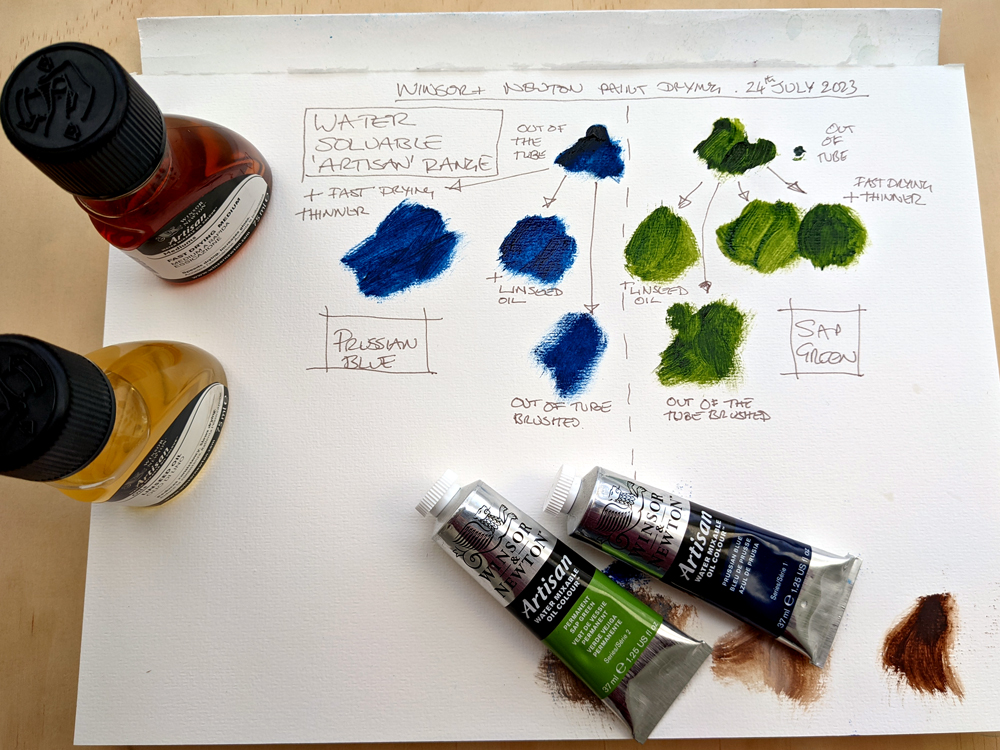
I’m quoting the drying times here to show how my experiment went, but of course different overall temperatures, paint thicknesses / manufacturer and ground will all play a part in the actual timings. If this is important for you, then I do recommend a few experiments – they are always fun to do – and you come back to them a surprising number of times as reference points in the future!
Apparently you can use regular solvent based oils & thinners and retardants with these paints, but they of course will change the nature of the paint and you will need to use solvent (turps) for clean up.
My next step was to try a larger painting (whihc is still underway as I write this post) – a seascape that I had already painted en plein air with watercolours.
To get a feel for the colours I would need to mix, I created some big swatch cards, to help me see the different colour mixes I could get from the colour palette I had assembled – basically the 10 colours that came with the original set, plus Prussian Blue & Sap Green. I think I will also add a Raw Sienna and Diox Purple in time, but don’t need them right now for a seascape.
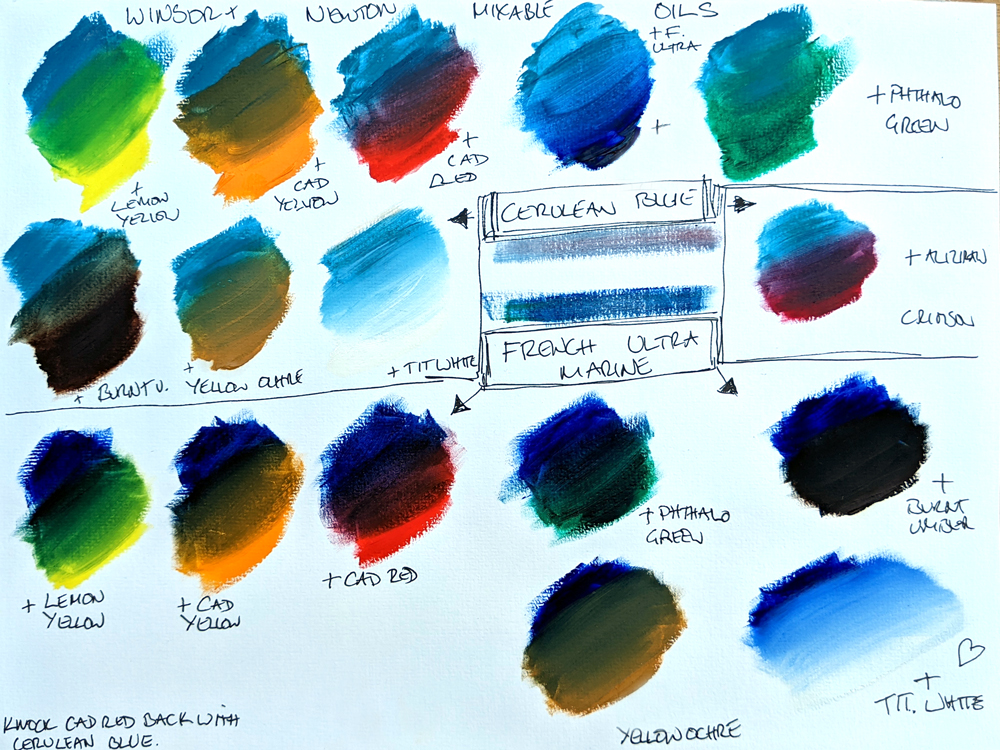
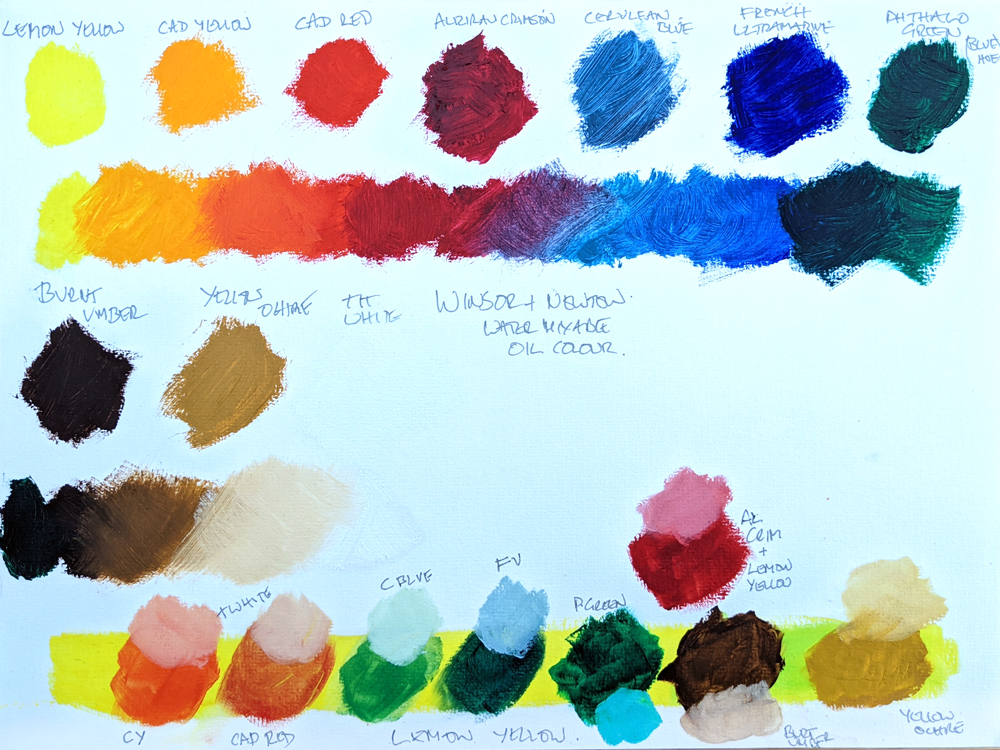
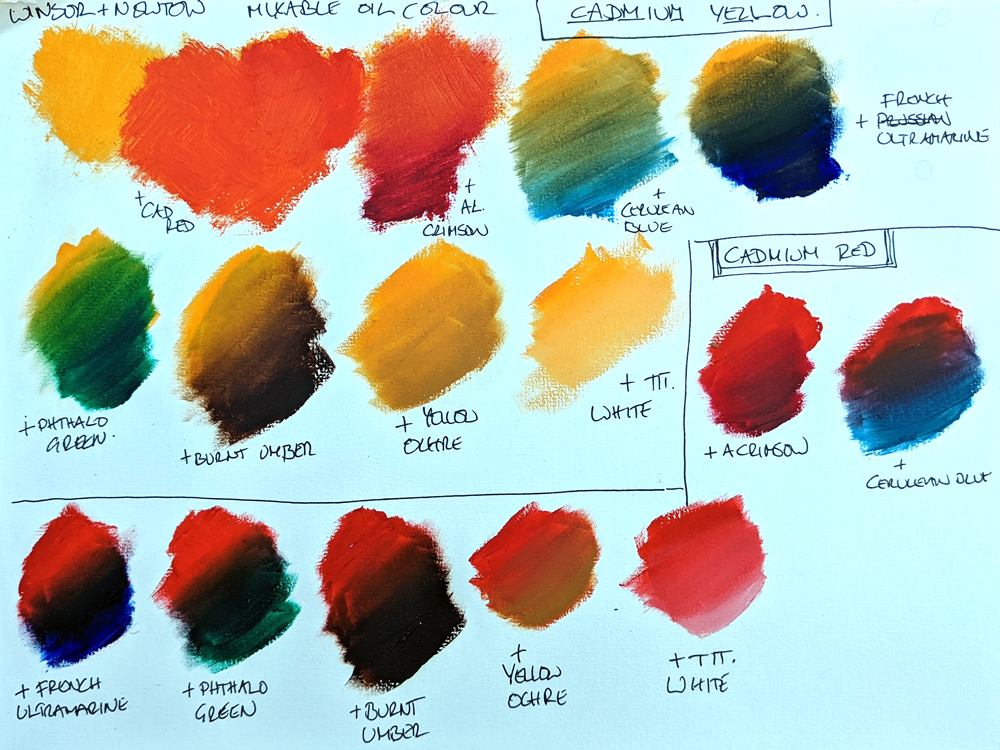
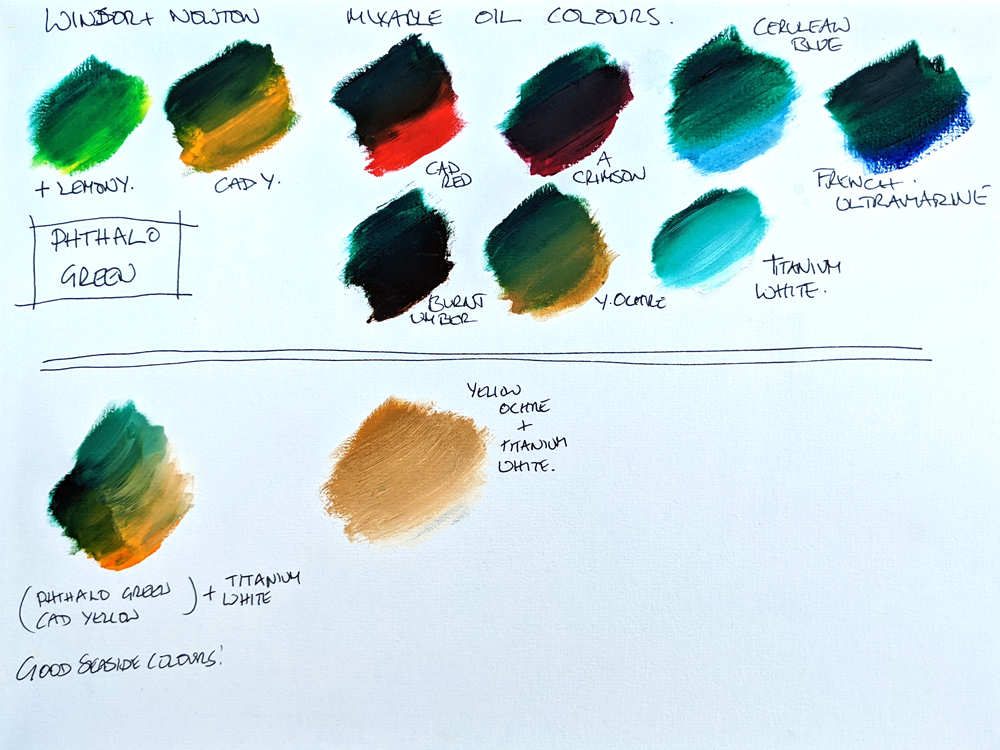

Leave a Reply
You must be logged in to post a comment.